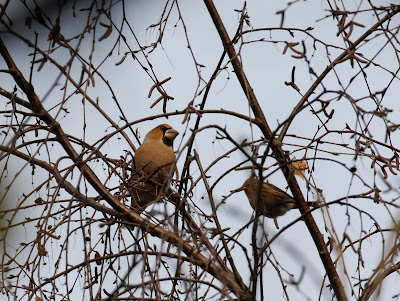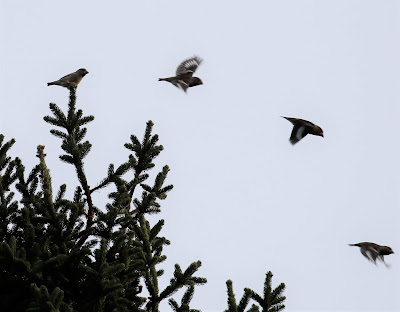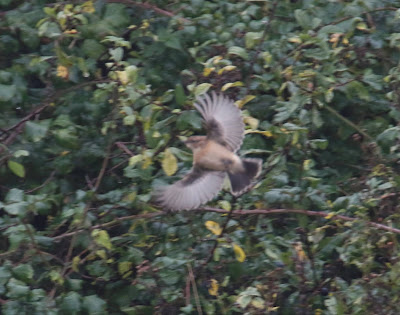I decided to hit Beachy Head hard today and cover as much of the area as my legs and enthusiasm could take. This turned out to be a good move as it was an extremely enjoyable session with plenty of interesting birds flying overhead, and seemingly, fairly busy in the bushes too!
I started at Birling Gap walking up to the pines before covering the Belle Tout area (excluding the wood) where the highlight was a Lapland Bunting flying west over the gulley and two Dartford Warblers in the gorse here. A Black Redstart was also at Birling Gap. I drove up to the hotel and walked straight down into Cow Gap via Icky Ridge and into Whitbread Hollow. Bob and Paul were ringing and had trapped a Mealy Redpoll earlier on! Throughout this walk I had seen five Ring Ouzels, three Firecrests and another Dartford Warbler, but overhead was where the interest really was as a Crossbill and amazingly, three Bearded Tits flew over!
I then parked up at Shooters Bottom and half-heartedly searched for the blythi Lesser Whitethroat with limited success, although another Dartford Warbler and a flyover Woodlark were good to see. I then walked up to Long Wood, back through Cornish Farm, rough field and into Belle Tout Wood, where finally, I found a Yellow-browed Warbler on the eastern edge of the wood. It was only present for a mere 30 seconds before vanishing. I walked back to Shooters and briefly checked Harry's Bush on my way back where other than more Goldcrests, little was seen.
Totals for Beachy are as follows:
Goldcrest - ca. 50
Firecrest - 5 (2 Birling, 1 Cow Gap, 2 Whitbread)
Redpoll - ca. 40 E
Lapland Bunting - 1 W 08.15 (Belle Tout Gulley)
Dartford Warbler - 4 (2 Belle Tout, 1 Whitbread, 1 Shooters)
Chiffchaff - 25
Grey Wagtail - 1 E
Common Scoter - 5 offshore (Cow Gap)
Bearded Tit - 3 E (Whitbread)
Crossbill - 1 E
Fieldfare - 4
Ring Ouzel - 6 (4 Cow Gap, 1 Whitbread, 1 Shooters)
Stock Dove - 25 E
Woodlark - 1 W
Black Redstart - 1
Yellow-browed Warbler - 1 (Belle Tout Wood)
There were lots of Swallows and House Martins, plus a few thousand Starlings at Birling first thing. Linnets, Siskins and alba Wagtails were also conspicuous overhead!
 |
| Yellow-browed Warbler |
 |
| Firecrest |
 |
| Starlings |
 |
| Ring Ouzels |
 |
| Bearded Tits - my first ever high-flyers |






















































